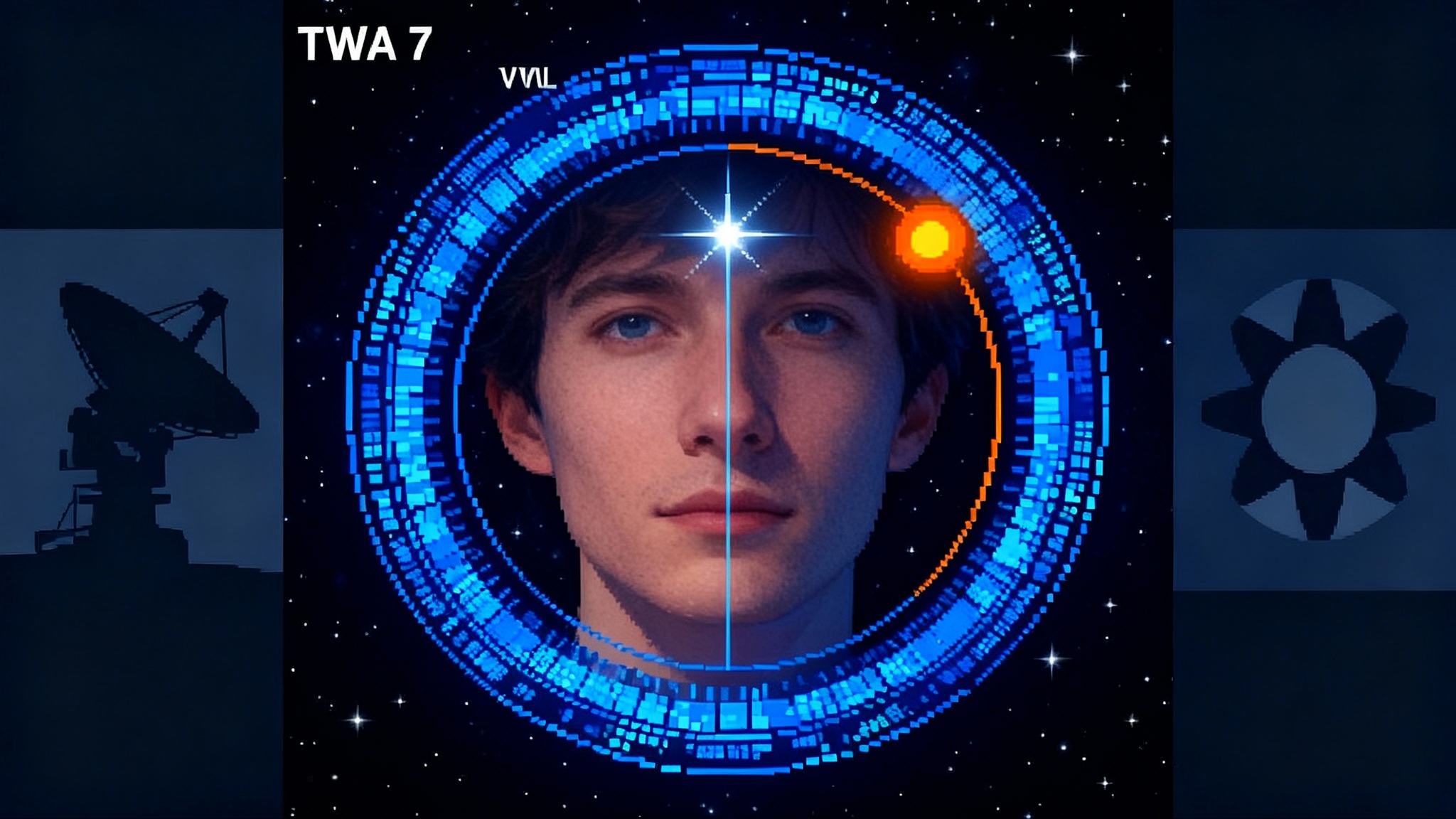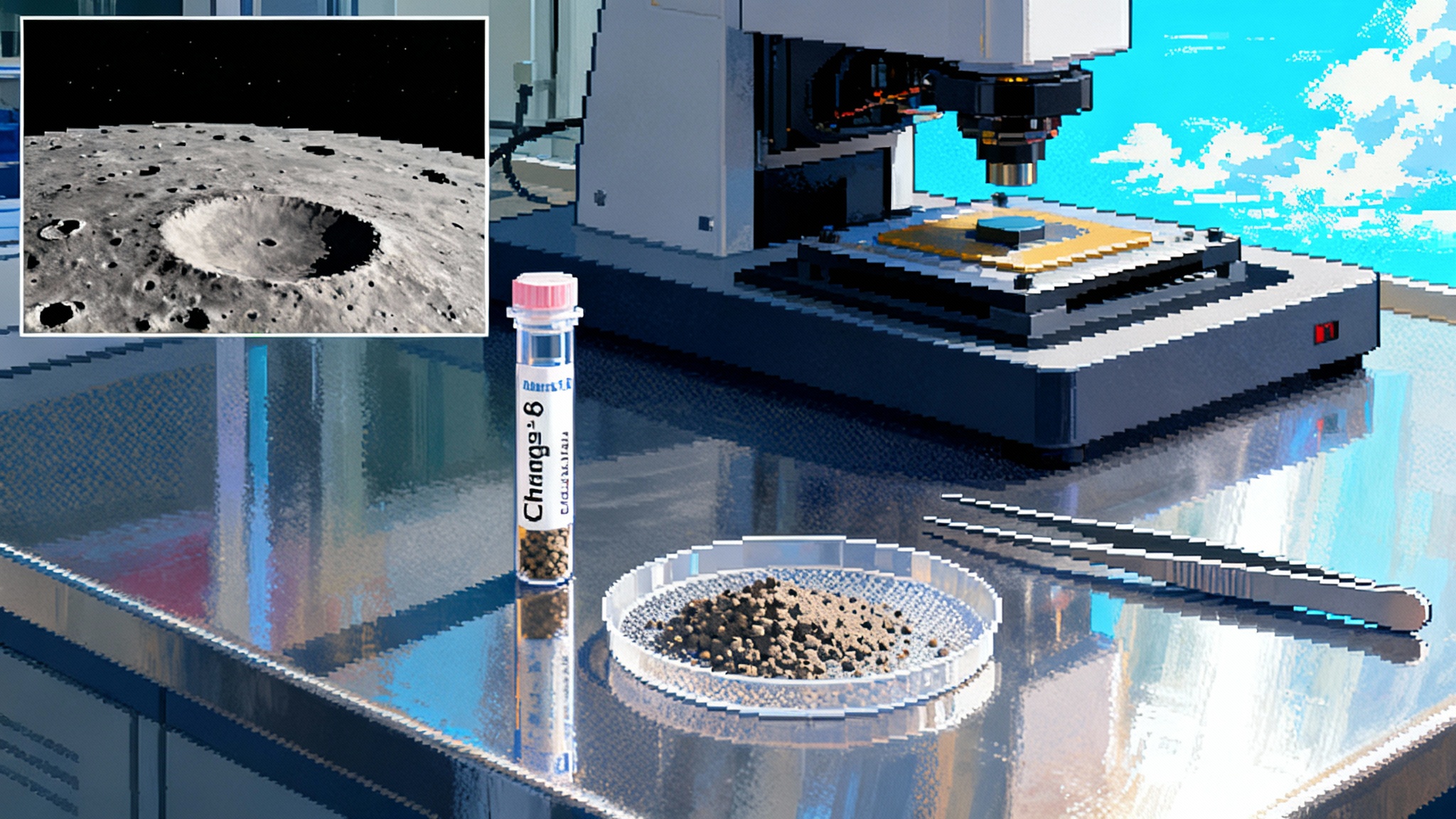Planetary defense goes live: inside the 2025 FA22 flyby
A skyscraper-size asteroid skimmed past Earth on September 18, 2025, and the planetary defense community treated it like a live exercise. Here is how IAWN’s drill, real-time radar imaging, and ESA’s Risk List workflow performed under real timing and coordination pressure.

A close call that was never a threat
On September 18, 2025 at about 07:42 UTC, near-Earth asteroid 2025 FA22 swept past at roughly 2.2 lunar distances. That is safe by cosmic standards, but close enough and large enough to command attention. With an estimated diameter between 130 and 290 meters, FA22 falls into the city-killer class. It was discovered in late March by Pan-STARRS 2, and its early orbit solutions briefly placed it near the top of Europe’s impact Risk List for a notional 2089 encounter. Additional measurements quickly closed the door on impact possibilities and ESA cleared the object in May.
If this sounds like routine sky-watching, the response was anything but routine. Planetary defense went live. Agencies and observatories around the world ran a snap exercise using a real object, real data, and real stakes in timing and coordination.
Turning a flyby into a live drill
The International Asteroid Warning Network treated FA22 as if it were a current impact concern. The network stood up a structured campaign with working groups for astrometry, photometry, spectroscopy, polarimetry, radar, and hazard modeling, complete with telecons, data standards, and a notional impact epoch to focus activity. You can read the public outline on the IAWN FA22 campaign brief, which frames the event as a training run with a hypothetical 2089 impact scenario and a defined cadence for observations and check-ins.
The point was not drama. It was muscle memory. In a real crisis you do not invent workflows on the fly. You execute them. FA22 provided a realistic rehearsal of the first 72 hours: tighten the orbit, bound the size and spin, sniff out composition clues, pass everything into risk models, and communicate clearly between agencies without confusing the public.
Why ESA flagged it, then cleared it
Newly discovered objects often carry wide error bars. In early April the observational arc for FA22 spanned only weeks, so the family of possible future paths included a small sliver that intersected Earth’s position in September 2089. Because the object is large enough to cause severe regional damage, that nonzero probability put it high on ESA’s public Risk List. That list is designed to be conservative early and to decay quickly as more measurements arrive.
Once follow-up observatories added more nights of data, the orbital uncertainty shrank. The 2089 solutions peeled away from Earth and the listed probability collapsed to effectively zero. ESA removed FA22 from its Risk List in May, exactly how the system is supposed to work. The episode is a clear demonstration of why “on the list” should never be confused with “on a collision course.”
The radar cavalry arrives
Goldstone’s 70-meter antenna in California took the lead on radar characterization, with observing windows scheduled from the morning of September 18 through September 22. The team also set up cross-continental radar speckle and bistatic experiments with elements of the Very Long Baseline Array, European VLBI and e-MERLIN networks, and receivers in Japan and Australia. The plan was straightforward: transmit from Goldstone or Madrid at X-band, catch the returning whisper with multiple dishes, and turn that echo into delay-Doppler images, spin state, and size constraints within hours. The Goldstone FA22 radar schedule details the multi-day plan and partner arrays down to track IDs and expected signal-to-noise.
Why all the fuss about radar? Because radar collapses uncertainty fast. With a strong echo you pin down distance and line-of-sight velocity to meters and millimeters per second. That slices the orbit errors and feeds risk models with numbers you can bet lives on. Radar images also reveal shape, surface texture, and rotation, which set the stage for any future deflection scenario. If the object is a fast spinner or a contact binary, your playbook changes.
Optical, polarimetric, and spectroscopic workhorses
While the radio dishes did their work, optical telescopes in both hemispheres hammered away at photometry and astrometry. Photometry produced light curves for rotation period and amplitude. Polarimetry added clues about the surface regolith’s roughness and albedo. Spectra in the visible and near-infrared pointed to probable mineral families and maturity of the surface. This is not trivia. Albedo and composition feed the size estimate by tying brightness to reflectivity. Composition and texture hint at cohesion and porosity, which determine how a kinetic impact will couple to the target.
A key lesson from FA22 was cadence and coverage. The campaign structure assigned specific nights and geometries to different teams, minimizing duplication and keeping the stream continuous across longitudes. Because the object brightened to around 13th magnitude on September 18 to 19, even modest professional telescopes could contribute time-series data with good signal. The working groups coordinated formats so that nightly reductions could drop straight into shared repositories and then into risk and physical modeling.
From DART to Hera to real-time playbooks
What do these fresh FA22 results have to do with deflection? Everything. The modern playbook was written by two missions taken together. In 2022, NASA’s DART slammed a spacecraft into Dimorphos and shortened its orbital period around Didymos. ESA’s Hera, launched in 2024 and now en route for a 2026 to 2027 rendezvous, will provide the forensic audit by measuring Dimorphos’s mass, internal structure, and crater geometry.
FA22 connects to that playbook because any real deflection decision depends on knowing, quickly, what sort of asteroid you are dealing with. A loose rubble pile reacts differently than a monolith. A fast spinner or a tumbling body complicates a kinetic hit. High-porosity targets swallow impact energy while cohesive ones throw more ejecta and amplify the deflection. The FA22 drill stressed those questions on a live target and practiced the data handoffs that answer them in days rather than weeks. For broader context on small-body operations and material properties, see our look at the Tianwen-2 quasi-moon sample return.
What worked, and what we still need
- Speed of orbit refinement: Dense astrometry plus early radar shrank FA22’s positional uncertainties on a timeline that would support actionable policy if this had been real. That validates investment in keeping Goldstone healthy and in booking DSN time on short notice.
- Clear roles and real deadlines: The IAWN campaign spelled out who led which working group and when each deliverable was due. That kept hundreds of observers from tripping over each other and allowed nightly updates to build a coherent picture.
- Public messaging: ESA’s early listing and quick delisting provided a teachable moment on how risk evolves as data accumulates. The community avoided the traps of downplaying early probability or sensationalizing it.
- Global radar as a system: Using multiple receivers on different continents boosts effective aperture and resilience. If one transmitter or klystron underperforms, diversity saves the data. The FA22 tracks showed how to braid DSN, European, Japanese, and Australian assets into a coherent instrument.
Where did the seams show?
- Planetary radar capacity: Since Arecibo’s loss, the community relies heavily on Goldstone and a patchwork of bistatic partners. FA22 proves the network can scale, but it also underscores the thin margin. A second high-power planetary radar would harden the system.
- Automation of ingest: Teams did heroic work to normalize formats and metadata. Fully automated ingestion of ADES astrometry, calibrated photometry, and radar products into CNEOS-style risk pipelines should be the default, not the goal.
- Exercise transparency: The campaign plan is public, which is excellent. A simple after-action page with a single timeline, key plots, and plain-English takeaways would multiply the value for educators and local emergency planners.
Lessons for the next close pass
- Pre-book radar storm windows: Keep a rolling reserve of DSN blocks and partner arrays that can be triggered when an object crosses preset thresholds in size and closest-approach distance. For how launch and ground assets interplay under tight timelines, see our New Glenn Mars mission outlook.
- Publish a standing drill script: Make the IAWN exercise spine reusable. The FA22 schedule of kickoff, mid-campaign check-ins, and closeout worked. Codify it so every campaign begins on day one with known dates and owners.
- Build a shared dashboard: One live map of sensor status, last-seen photometry, radar tracks, and current risk solution focuses attention. A stripped-down version can be public without compromising security or privacy.
- Treat polarimetry as core, not optional: The FA22 effort showed how much those measurements tighten albedo and size. That cascades into better mass estimates when combined with radar shape and spin.
- Train the handoff to policy: In a real threat, data must flow from observatories to national risk owners and emergency managers with no friction. Use each IAWN campaign to rehearse that bridge, including templated briefings and thresholds for when to notify or activate civil authorities. For a parallel in rapid lessons learned, revisit what 2025 Moon landings taught.
The larger arc
Planetary defense is not a single mission or instrument. It is an ecosystem under pressure to get faster, clearer, and more reliable. DART gave us first principles of what a kinetic impact can do. Hera will turn those principles into calibrated numbers for mass, porosity, and coupling. FA22 shows that the pipeline from first arc to refined orbit, from light curve to spin state, and from echo to shape is becoming a practiced craft that can run on global time.
That is what going live looks like. Not hype. Not panic. Just a community that can pick up a real rock on a Thursday morning, coordinate across continents in near-real time, and hand back a better understanding of the threat landscape before the weekend.
When the next big one jogs closer, we will not be starting from scratch. We will be following a playbook tested on the sky itself.








